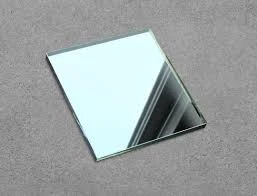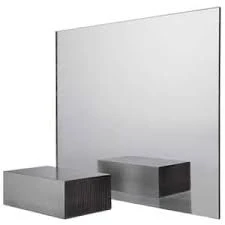Clear float glass, a staple in the world of manufacturing, construction, and design, has long offered a balance of clarity, strength, and cost-effectiveness. In an ever-evolving market, understanding the pricing dynamics of clear float glass is pivotal for businesses aiming to optimize procurement and maintain competitive advantage.

The price of clear float glass is influenced by several key factors that contribute to its market variability. First, raw material costs play a significant role. Silica sand, soda ash, and dolomite are essential components in glass production. Fluctuations in the mining and supply of these materials can cause notable shifts in glass prices. For instance, any geopolitical tensions or environmental regulations impacting mining activities can directly affect raw material availability and cost.
Energy consumption is another critical component of clear float glass pricing. The manufacturing process requires intensive heating at high temperatures, primarily relying on natural gas or electricity. Therefore, any changes in energy costs, driven by global oil prices or advancements in renewable energy technology, can impact the final product's price. Regions with abundant and cheap energy sources often have a comparative advantage, leading to pricing differences across geographical locations.

Transport logistics also have an undeniable impact. Given that clear float glass is both heavy and fragile, efficient transportation is crucial. The costs associated with shipping, handling, and potential wastage during transit can influence the price considerably. Companies often need to consider proximity to production facilities or ports as a vital factor in their supply chain decision-making.
In recent years, technological advancements and innovations have begun to shift the pricing landscape. Modern manufacturing techniques, such as automated production lines and quality control systems, have reduced labor costs and improved efficiency, leading to potential price reductions. Furthermore, advancements in recycling technologies are enabling the use of more recycled glass in production, lowering resource dependency and potentially stabilizing costs.
clear float glass price
Market demand, buoyed by sectors like architecture, automotive, and electronics, continues to influence pricing trends. As the demand for smart buildings and energy-efficient homes rises, the need for advanced glass solutions such as low-emissivity and solar control glass intensifies. This growing demand pushes manufacturers to enhance their production capabilities, which can sometimes lead to economies of scale and reduced per-unit costs.
In terms of experience, purchasing departments often observe that negotiating long-term contracts can be beneficial in mitigating price volatility. Establishing relationships with multiple suppliers ensures a steady supply and better pricing deals, while also empowering buyers to leverage competition.
Expertise in market analysis is critical in anticipating trends. For clear float glass, tracking global construction indices and macroeconomic indicators can provide insights into demand forecasts. Additionally, staying abreast of policy changes, such as tariffs or trade agreements affecting glass imports and exports, ensures businesses remain agile and informed.
Clear float glass pricing is not just a simple equation of cost plus margin. It is a complex interplay of material availability, energy costs, technological advancements, logistical efficiencies, and market demand. Businesses that invest in understanding these components and developing strategic procurement plans will likely secure both cost advantages and supply reliability in this fundamental material market.



